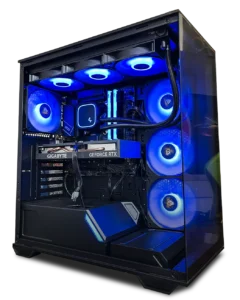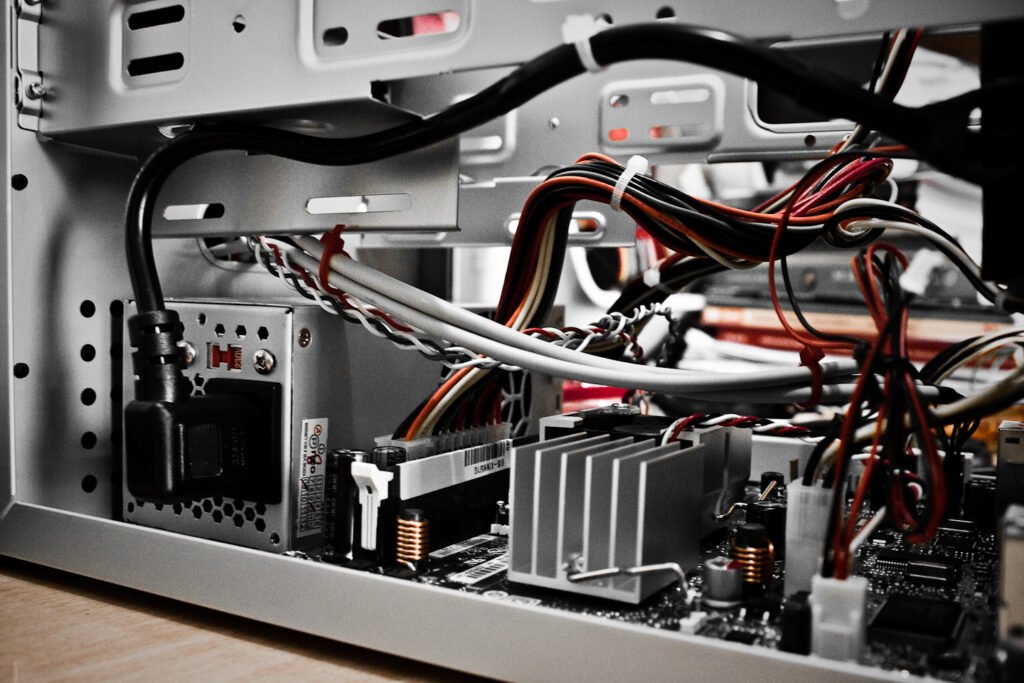PC
How to Build Gaming PC Under Budget – 101 Guide
Whether you are a full-time gamer or gaming is just your hobby, every gamer deserves a budget gaming PC of their liking. But you can either find a budget PC that has a decent graphic card of your liking or the 1440p you need; there just isn’t the balance YOU need in your PC.
And so here you are, on a how to guide to build gaming PC under a Budget.
Now, building a PC from scratch (especially for the first time) might get frustrating, probably very much so, but trust us, it’s worth the great sense of achievement you will get.
It can honestly be very straigth forward!
Here’s how-
Step 1: Decide what’s important to you.
The key is balancing your components for maximum performance per rupee.
For building gaming PCs the GPU is obviously the highest priority since modern games are very GPU-intensive, so a stronger GPU yields a higher frame rate.
Now what’s your second-highest priority? Is it higher resolution or better storage? Where do you feel most comfortable compromising?
Map it out, strategize, and draw from experience with your older PCs.
We believe it’s better to go for a balanced approach. Go for decent equipment and build a holistically performing PC.
Step 2: Get your tools!
Find a screwdriver and long-nose pliers! That’s it; that’s the step! Easy enough, eh?
Step 3: The checklist
Let’s start off with a list of everything that you’re going to need to build gaming PC:
Core Components
Processor (CPU)
Graphics Card (GPU)
Motherboard (compatible with CPU & RAM)
RAM (minimum 16GB DDR4, preferably 2x8GB)
SSD (at least 500GB NVMe recommended)
Hard Drive (optional, for extra storage)
Power Supply Unit (PSU) – 550W or higher, 80+ certified
Cabinet/Case (good airflow, fits GPU size)
Optional Components
Aftermarket CPU Cooler (if not using stock cooler or planning to overclock)
Additional Case Fans (for better airflow)
WiFi Adapter (if motherboard doesn’t have built-in WiFi)
Sound Card (if higher audio quality is required)
Peripherals (if needed)
Monitor (1080p or better, 75Hz+ for gaming)
Keyboard (mechanical or membrane)
Mouse (basic or gaming-specific)
Speakers or Headphones
Webcam (for streaming or video calls)’
Microphone (optional)
Tools and Setup Items
Phillips Head Screwdriver (preferably magnetic)
Thermal Paste (only if CPU cooler doesn’t include it)
Zip Ties or Velcro Straps (for cable management)
Antistatic Wrist Strap (recommended)
Bootable USB Drive with Operating System
HDMI or DisplayPort Cable (for connecting monitor)
After-Build Setup
Enable XMP in BIOS to run RAM at full speed
Install Windows/Linux and all drivers
Update BIOS (if necessary)
Install essential software and games
Check CPU/GPU temperatures under load
Let me know if you want this checklist tailored for different budget ranges or gaming preferences.
The guide to build gaming PC in your custom-price
Each entry-level build above costs roughly ₹50,000~55,000 (before peripherals/OS). The mid-range builds come in around ₹100,000, and the high-end around ₹170,000. Prices fluctuate, so check Mostech for current deals!

STEP 4: Attention, stand at ease AKA Start the Assembly!
1.Safety First
Before touching any component, ground yourself by touching a metal part of the case or using an anti-static wrist strap. Always work on a clean, flat surface to avoid static damage or losing tiny parts.
2. Prepare the Case
Lay the case flat and remove both side panels. Make sure the motherboard standoffs are installed in the correct positions according to your motherboard size (ATX, mATX, etc.).
3. Install the CPU on the Motherboard
Lift the CPU socket lever. Align the golden triangle on the CPU with the triangle on the socket. Gently place it in — no force needed — then lower the lever to secure it.
4. Install RAM
Align the notch on the RAM sticks with the slots and push down firmly until the side clips click into place. Ensure each stick is fully seated.
5. Install M.2 SSD (if applicable)
If you’re using an M.2 NVMe SSD, install it now. Insert the SSD at a 30-degree angle into the M.2 slot on the motherboard, then press it down and secure it with the tiny screw provided.
6. Install CPU Cooler
If your cooler comes with pre-applied thermal paste, you’re ready to go. Otherwise, apply a pea-sized drop of thermal paste to the center of the CPU. Mount the cooler according to its type (screw-in or clip-on). Don’t forget to plug the CPU fan cable into the CPU_FAN header on the motherboard.
7. Install the Motherboard in the Case
Lower the motherboard into the case carefully, aligning it with the I/O shield and standoffs. Once aligned, screw it into place without overtightening.
8. Install the Power Supply (PSU)
Mount the PSU into the case, typically at the bottom rear. Secure it with screws. Plug the 24-pin ATX and 8-pin CPU (4+4) power cables into the motherboard, but keep the cables managed loosely for now.
9. Install the Graphics Card (GPU)
Remove the required PCIe slot covers from the case. Insert the GPU into the top PCIe x16 slot on the motherboard until it clicks in. Secure it to the case using screws and plug in the PCIe power cable(s) from the PSU, if required.
10. Connect Front Panel Cables
Attach the front panel connectors to the appropriate headers on the motherboard:
Power switch
Reset switch
Power LED
HDD LED
Front USB and Audio headers
Refer to the motherboard manual for the correct pin layout.
11. Cable Management
Neatly route and tie down cables using zip ties or Velcro straps. Ensure no wires obstruct airflow or fans. Proper cable management keeps the system cool and improves aesthetics.
This order ensures efficiency, safety, and ease of access during the build. Let me know if you’d like a printable checklist or visual guide too.
The insertion of a graphics card into a PCIe port. Upon attaching all the cables, take a final run of all the loose ends, close the case, and attach your monitor, keyboard, and power cord. Boot up and check the BIOS to see that the drives, RAM, and CPU are recognized.
These are the steps to remember, and by focusing on getting quality parts (specifically, a good GPU and SSD), you will get a stable and high-performance gaming rig. Higher build tiers are associated with clear expectations: using the entry build, one can play popular games at 1080p around 4040 and 60 FPS (more so in esports titles), the mid-range rig can play at ~ 60+ FPS at 1080p (even new AAA games), and the high-end one flies through 1440p games (e.g: -141 FPS in Outer Worlds).
And if all this seems too much or you just dont have the time, We can build your Budget Custum PC for you.
Order your Budget custum build PC here!
Image source: Flicker

